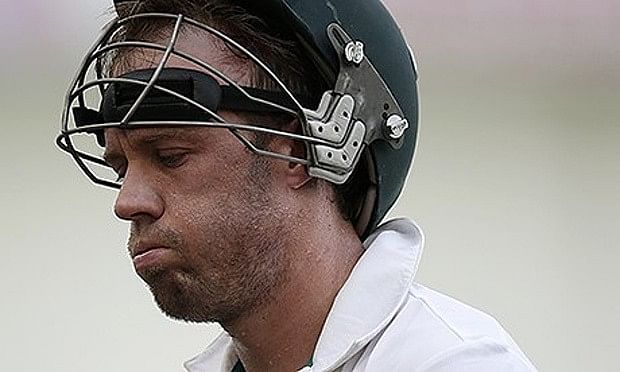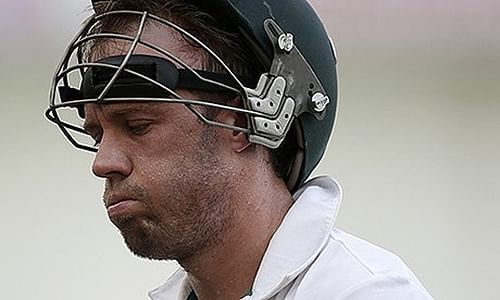
Why South Africa deserved the kind of pitch they got in Nagpur

The series defeat in Nagpur marked the end of a domineering nine-year period of the South African cricket team, during which they managed to avoid defeat in 15 away tours. The previous time they had lost a series away from home was against Sri Lanka in Sri Lanka when they were whitewashed in a two-match series.
What ensued after that series was an almost a decade-long period of domination that saw the African team emerging defeat-less in all of their tours away from their backyard. The team had done well in the bouncy conditions of Australia, had braved the swing in New Zealand and England, faced the scorching desert sun in the Middle East and stood tall in the dust bowls in India and Sri Lanka.
To bring such an epic streak to an end, it took a highly ‘one-sided’ pitch in Nagpur. Whether Nagpur was the only one-sided pitch in the recent times is a million dollar question. The ball spun right from the first session of the match as experts termed it diabolical; for many in the world are more averse to seeing the ball turn square than they are to seeing the ball seem square.
The trope minefield almost became a literal description of the pitch as balls curved in the air like a snake and leapt off the turf like a frog. The modern batsmen’s inability to smother spin with their footwork was left exposed while the modern temperament chiseled by the more exhilarating shorter formats that had pilfered batsmen’s patience was questioned.
Whether the Nagpur pitch was sporting is an unsettled concern but the truth is that, come what may, the South African team deserved the way their 9 year period ended in Nagpur. Before propounding the reasons, it must be admitted that the Springboks played a regal form of cricket. Howbeit, some of the ugly, underhand tactics they employed should not be forgotten, nor forgiven.
The South African team on three separate occasions were either accused or reprimanded for trying to alter the condition of the balls, which helped them produce prodigious reverse-swing. Despite being accused of ball tampering and having been caught in the act twice, the fandom was lenient on the team. It is not too difficult to imagine what the reaction would have been had a team like Pakistan been accused of ball tampering. As to why South Africa’s deviousness were cold-shouldered is moot.
Incident 1: Faf du Plessis scraping the ball with his zippers against Pakistan in Dubai, 2013
South Africa began their two-match series against Pakistan with a heavy defeat at the hands of the hosts. Spin bowling proved to be their biggest nemesis as the visitors lost the first test by 7 wickets.
Trailing the series, South Africa took a head start in the second match by restricting Pakistan to 99, thanks to the host’s inability to pick Imran Tahir’s googlies.
Two overs after tea on the third day, the TV umpire spotted du Plessis rubbing the ball near the zipper of his trouser pocket. The on-field umpires were immediately notified of the incident and they summoned the South African captain for a chat, following which Pakistan was awarded five penalty runs and the ball was changed.
The South African batsman was fined 50% of his match fee and he decided not to contest the decision, since that can lead to a harsher punishment. Nevertheless, the team management called the penalty for the offence harsh.
AB de Villiers speaking to the media after the third day tried his best ward off the charges stating that "We are not a team that scratches the ball. We play in a fair manner, we want to swing the ball as much as we can, we try and get it to reverse, putting more sweat on one side and things like that, but we don't cheat. It's as simple as that," he added.
However, almost a year later another South African was caught red handed scuffing the ball, which proved that the current ODI captain of South Africa’s statement was merely a prevarication.
Incident 2: David Warner accusing AB de Villiers of ball tampering
Almost four months later, when Australia toured South Africa, the South Africans were found in a similar position as they trailed the series going into the second test having lost to the visitors by 281 runs in the first test.
South Africa came back stronger in the second test dishing out an equally humiliating defeat to Australia, winning the match by 231 runs. In the fourth innings, the South African pace triplet found profuse reverse swing sharing 7 wickets among them. Australian opening batsman, David Warner, was unhappy with the way the Proteas worked on the ball.
"I think it comes down to the umpires warning both teams not to throw the ball into the wicket which you generally try and do," Warner told Sky Sports Radio. "They did it better than what we did, or more obvious than what we did. At the end of the day it comes down to who can do that the best and work on the ball.”
But Warner’s angst was particularly directed at South Africa’s wicket keeper AB de Villiers. "We were actually questioning whether or not AB de Villiers would get the ball in his hand and with his glove wipe the rough side every ball. That's another thing we have to try and bring up with the umpires", the fiery Australian opener testified.
However, the team manager trashed all claims of ball tampering calling David Warner’s complaint “sour grapes”. But given what Faf du Plessis did in the UAE and what Philander would be caught doing in Sri Lanka in another few months, Warner’s claims cannot be brushed under the carpet so easily.
Incident 3: Vernon Philander nabbed while scraping the ball
Within a year, another South African was caught tampering the ball against Sri Lanka in Galle in 2014. Batting first on the Galle pitch that is renowned for its hospitality for spinners, the South African batsmen amassed 455 runs.
In response, Sri Lanka were reduced to 292 in their first innings. Dale Steyn who had had a torrid time in Sri Lanka till then, produced a spell of immaculate reverse-swing bowling, the best in the stadium so far and ended up picking up 5 wickets.
After Steyn’s prodigious reverse-swing wreaked havoc, the umpires and officials, when analyzing the visuals of the day’s play, found Vernon Philander trying to scratch the surface of the ball with his fingers. He was fined 75% of his match fee, although Sri Lanka was never awarded five penalty runs.
The footage of the incident was never aired until Sri Lanka cricket interfered, thanks to the South African team which pressured the broadcasters from airing the footage to save their good-boy image.
It must be noted just after the concerned incident, Dale Steyn tore through Sri Lanka’s batting lineup, picking up three wickets in five overs.
South Africa would go on to win that match and win the two-match series 1-0.
Much like the earlier incidents, not many made much hullaballoo and any reaction to the crime lasted only the length of the test match.
The aforementioned show that despite having played really well during this period, the South African team employed undesirable tactics to gain advantage over the oppositions. The cricketing world too, ignored most of their wrongdoings, thanks to the kind of talent that they possess within their ranks.
Whether the way their domination collapsed could be attributed to karma or poetic justice is up to an individual to decide. But there is no denying the fact that the pitch South Africa got in Nagpur was a very well deserved one.